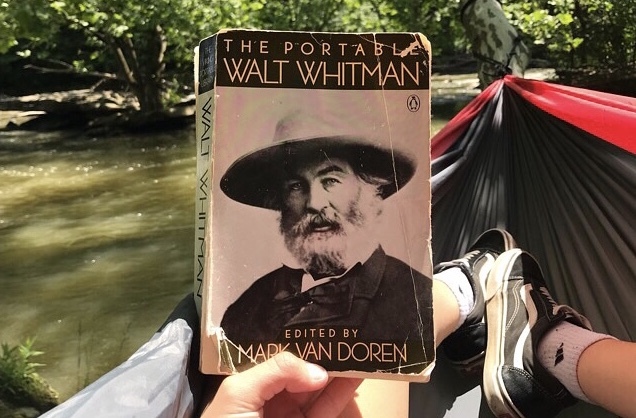As I sit on the MAX on my way into Portland, I flip through the pages of my beat-up copy of Walt Whitman’s Leaves of Grass. Every few stops, I find myself glancing up from the pages to look around at the passengers who are coming and going from the train on its way into the city. I notice an older man is fast asleep while the woman next to him stares out the window, a mother reties her son’s shoes, and a young man in a college hoodie taps his feet to the beat of whatever tune must be playing in his headphones. While I flip to the next page, I notice that I’m the only passenger in the car who is reading a book, while the majority of other passengers keep their eyes glued to their phones.
When I was in the process of applying to the book publishing program at Portland State University, numerous people asked why I would want to go into an industry that is becoming more digital by the day. Young and old people alike seem to be turning their backs on paperbacks and tuning in to the digital world instead, so why would I want to pursue a career that involves making printed poetry compete with social media’s latest meme or Harry Potter in audiobook form? As my MAX stop arrives, I walk to campus with thoughts still swirling in my head about the future of the print book industry in a society that is becoming more digitally dependent. Can it survive? Who will care about printed books once audiobooks take over? Will the kids of the future ever come to know the beauty of that “new book” smell?
With all of these questions circulating in my mind, I walk into the publishing lab classroom at Ooligan Press and see the faces of so many other young individuals who are driven to ensure that the legacy of printed publication does not die out. Rather, after scanning the classroom, I see that the future of publishing looks quite young and well versed in the digital age, but also driven by the passion to keep page turning alive. While many readers have turned to new forms of digital media to get their page-turning fix, programs and presses similar to Ooligan reveal that younger people are still very engaged in the publication of print media, maybe even more so than ever before.
Technology has allowed authors, editors, publishers, and printers around the world to connect in a way that is unparalleled in publishing history. This new medium has brought forth a new generation of writers and readers who are capable of creating print media not only at a faster rate, but in a way that allows them to reach readers of all ages and languages around the globe. As a young reader and writer beginning my journey in the world of printed publication, I am seeing a new phase of page turning unfold with many young faces beside me. To all the doubters that feel the printed page is on its last leg, I laugh and continue to turn the page on a new era of publishing that has found a way to coexist with a world that’s become increasingly digital. A younger generation has now stepped up with fingers that can type faster, tweet out book promotions louder, connect authors to audiences face-to-face via webcams, and prove that the “new book” smell is just as intoxicating as ever. I look forward to pursuing a career in the printed word alongside writers and readers who can live a balanced life in the technology universe while still enjoying curling up with a good book.

